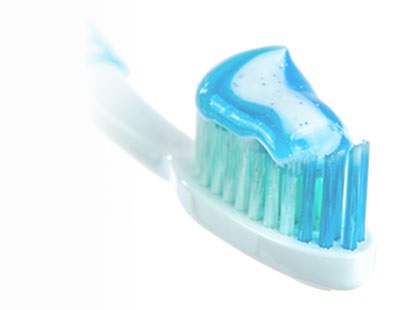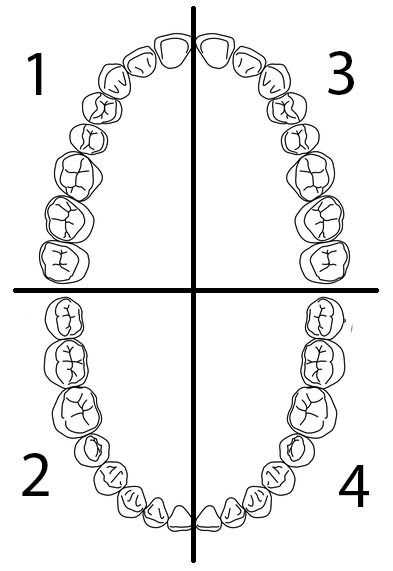How to Brush Your Teeth With a Manual Toothbrush
When using a manual toothbrush, it's very important to learn proper brushing technique. Optimal and regular oral care will help you maintain healthy teeth and gums throughout your life. So what should you remember about daily oral hygiene and how much time should you spend cleaning your teeth? We will advise you in this guide.

Frequently Asked Questions About Manual Toothbrushes
Which manual toothbrush should you choose?
Choose a toothbrush with fine, straight-cut bristles. Most commonly, dental practitioners recommend bristles of the same length, but their hardness and density are also important. Toothbrushes with are available with soft and hard bristles. Soft bristles are suitable for people with sensitive gums. No matter what bristle hardness you choose, keep in mind that it is not advisable to push too much on the toothbrush when in use, because the pressure increases the risk of gum injuries. As far as the density of the bristles is concerned, the higher, the better. A quality toothbrush should have 3500 bristles or more.
What else should you consider when choosing a manual toothbrush?
In addition to the bristle quality, note the handle design. The toothbrush must be held comfortably in your hand. It is also important for the head to be small enough to get to hard-to-reach places, such as the sides of your molars. The ideal size of a toothbrush head for adults is about 2 centimetres. Last but not least, many people make the final choice based on the colour of their toothbrush.
How often and how much time is needed to properly clean your teeth?
Ideally, you should clean your teeth after each meal. At a minimum, dentists recommend brushing 2-3 times a day. If you want to make sure that your teeth remain healthy, clean them after each meal. The minimum amount of time you should spend brushing should be 2-3 minutes, but dentists argue that anything less than 5 minutes will not clean your teeth sufficiently.
How to clean your teeth?
The brushing technique is the most important factor in reducing the onset of dental diseases. Learn more about how proper brushing should be done and what it involves.
Principles and Technique of Proper Teeth Brushing
Clean your teeth at least twice a day. Ideally after every meal.
After cleaning the toothbrush, wash it under running water, and let it air-dry.

Toothpaste, Accessories and Storage of the Toothbrush
Which toothpaste to use?
Various types of toothpaste are available for sensitive, paradentine, dyed teeth, and more. Toothpastes containing fluoride help fight tooth decay and mineralise enamel. After brushing with toothpaste, rinse your mouth thoroughly. Do not swallow toothpaste, as it is not for consumption and can cause health problems.
Do I need to use interdental brushes and dental floss?
Yes. Most tooth decay is due to insufficient cleansing of the interdental spaces, which are the ideal environments for the growth of bacteria and plaque. After each time you brush your teeth, use an interdental toothbrush and clean all interdental spaces with it. It is ideal to finish cleaning using dental floss and not to forget the sides of the teeth.
Mouthwash - yes or no?
Mouthwash disinfects and helps eliminate residual bacteria that remain in your mouth, even after a thorough cleaning. Mouthwash is a complement to brushing and improves its effects. Together, they efficiently work against the development of tartar, tooth decay, and gum disease.
Is a manual or electric toothbrush better?
The most important thing is to always use the correct cleaning techniques. The fact remains, however, that cleaning your teeth with electric toothbrushes is easier. They allow for easier handling when following the proper brushing techniques. Investing in one can also be an incentive for more thorough cleaning. The results of some studies show that people who brush with the electric toothbrushes generally do so for longer than with manual toothbrushes.
How often should a toothbrush be changed?
Look for signs of wear on the brush head. If you notice that the bristles do not hold their shape, they are going to the sides, or otherwise have changed their appearance, it is time to replace the brush with a new one. Even if the bristles do not show signs of wear at first glance, it is recommended to change the brush every three months. Bacteria and viruses accumulate in the head of the brush, which can be a source of infections, so replace it every so often.
How to store the toothbrush?
Keep the brush dry. After each use of your toothbrush, rinse it thoroughly with water and allow the bristles to dry out. Immediately after use of the toothbrush, do not put it in a case or put on a head cover - these are mainly meant for storing while travelling. In a wet environment, bacteria breed more easily.
